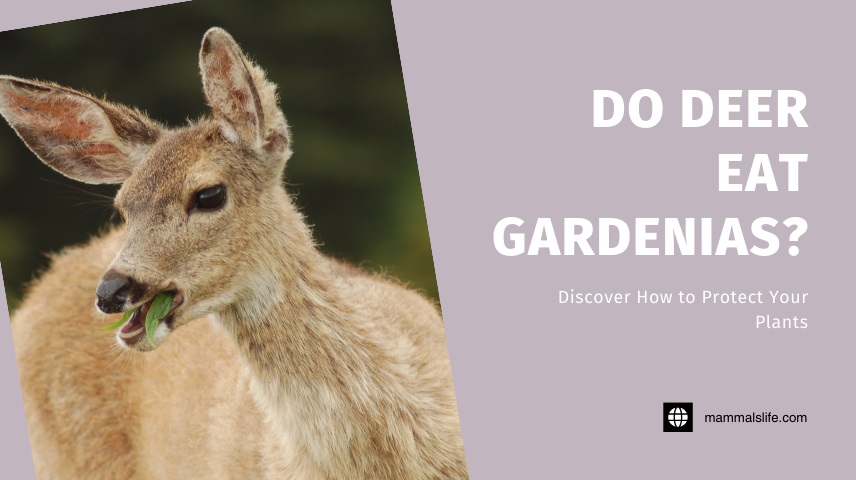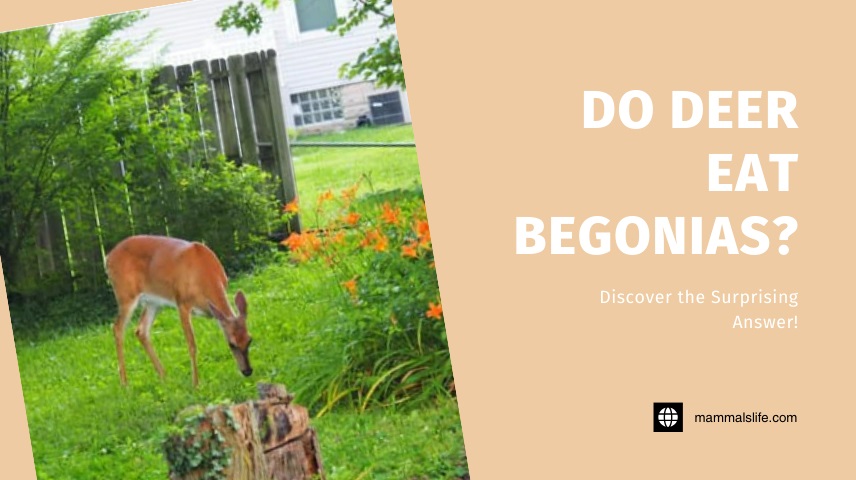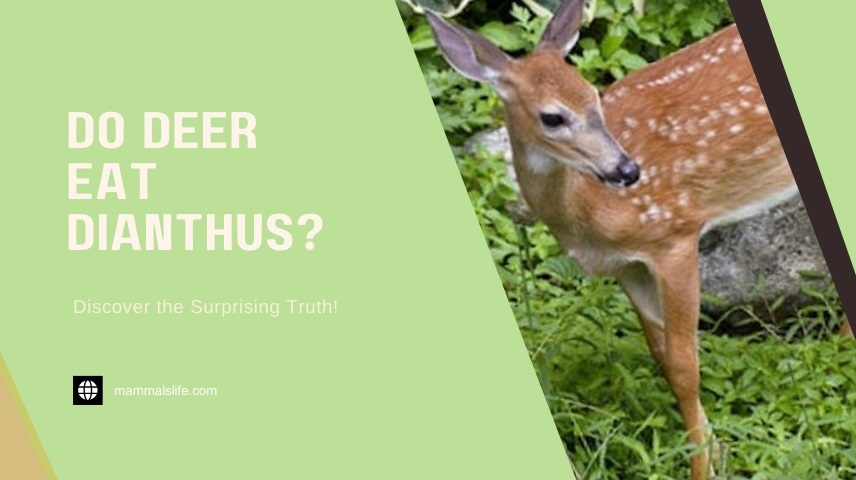Last Updated on February 22, 2025 by Mammals Life
Yes, deer eat gardenias. Gardenias are not deer-resistant and often fall victim to their feeding habits.
Gardenias are beloved for their fragrant, beautiful blooms and glossy green leaves. Unfortunately, these stunning plants are also a favorite snack for deer. Gardeners often struggle to protect their gardenias from these persistent grazers. Deer can quickly strip gardenias of their flowers and foliage, leaving behind damaged plants.
To safeguard your gardenias, consider using deer repellents or protective barriers. Planting deer-resistant species nearby can also help deter them. Understanding deer behavior and preferences is key to maintaining a beautiful and thriving garden. With the right strategies, you can enjoy your gardenias without worrying about deer damage.
Deer And Gardenias
Deer are known for their graceful presence, but they can be a gardener’s nightmare. Gardenias are beautiful shrubs, famous for their fragrant white flowers. But do deer eat gardenias? Let’s dive into the relationship between deer and gardenias.
Behavior Of Deer
Deer are herbivores and love munching on a variety of plants. They are most active during dawn and dusk. Deer have a keen sense of smell. They use it to find food and detect predators. Deer can jump high fences, making it hard to keep them out. They are also known to be very adaptable, living in forests, grasslands, and even suburban areas.
Gardenias As A Food Source
Gardenias are not a deer’s first choice of food. They prefer other plants like hostas and tulips. But if food is scarce, deer might eat gardenias. Gardenias have glossy, dark green leaves and fragrant flowers. These features can attract deer, especially in winter. The shrub’s thick foliage provides a good meal for hungry deer.
To protect gardenias, use deer-resistant plants around them. You can also try using deer repellents. Fencing your garden is another effective method. Remember, a hungry deer will eat almost anything.
| Features | Details |
|---|---|
| Deer Activity | Active during dawn and dusk |
| Deer Diet | Herbivores, prefer plants like hostas and tulips |
| Gardenias | Glossy leaves, fragrant flowers |
| Protection Methods | Deer-resistant plants, repellents, fencing |
- Deer can jump high fences.
- They have a keen sense of smell.
- Deer are adaptable to various environments.
- Gardenias can attract deer, especially in winter.
- Use deer-resistant plants around gardenias.
- Try deer repellents.
- Fence your garden to keep deer out.
Read More – Do Deer Eat Oats? Nutritional Benefits, Behavioral Insights, Practical Tips
Signs Of Deer Damage
Deer loves eating gardenias. They often leave clear signs of their visit.
Knowing these signs helps protect your garden.
Identifying Bite Marks
Bite marks are a strong sign of deer damage.
Look for jagged edges on leaves and stems.
Deer have no upper front teeth. This causes a tearing effect on plants.
Compare the bite marks with those from other animals.
Rabbits and rodents leave clean cuts. Deer bites appear rough and uneven.
Assessing Plant Health
Deer damage affects plant health. Check for missing flowers or buds.
Deer often eats these first.
Look at the overall health of the gardenia.
Damaged plants may appear weak or stunted.
Regular checks help spot deer damage early.
| Signs | Details |
|---|---|
| Bite Marks | Jagged, uneven edges on leaves and stems |
| Missing Flowers | Flowers and buds eaten first |
| Weak Plants | Plants appear stunted or unhealthy |
Identifying these signs helps in taking early action.
Protecting your gardenias from deer becomes easier.
Read More – Do Deer Eat Cabbage? Impact On Gardens, Nutritional Value, Preventing Guide
Natural Deterrents
Deer can be a gardener’s worst nightmare. They often munch on their favorite plants, including gardenias. Luckily, there are natural deterrents you can use to protect your precious blooms.
Using Scent-based Repellents
Deer have a strong sense of smell. This makes scent-based repellents very effective. You can use household items to deter deer:
- Garlic: Crush garlic and sprinkle it around your gardenias.
- Soap: Hang bars of soap from garden stakes near your plants.
- Human Hair: Scatter human hair around the base of gardenias.
These scents can keep deer away from your gardenias. They don’t like the strong smells and will avoid the area.
Planting Deer-resistant Species
Another way to protect your gardenias is by planting deer-resistant species nearby. Some plants are less appealing to deer. These plants can act as a natural barrier:
| Plant | Benefit |
|---|---|
| Lavender | Deer dislike its strong scent. |
| Marigold | Its bitter taste repels deer. |
| Sage | Deer avoid its aromatic leaves. |
Plant these around your gardenias to create a protective barrier. This will help keep deer at bay.
Read More – Do Deer Eat Ornamental Cabbage? Nutritional Value, Alternative Plants
Physical Barriers
Deer are lovely creatures, but they can be a gardener’s nightmare. They love munching on gardenias, leaving your garden in shambles. Physical barriers can help protect your beloved plants from these hungry visitors.
Installing Fencing
Fencing is one of the most effective physical barriers. A tall fence can keep deer out of your garden. The fence should be at least 8 feet high. Deer can easily jump over lower fences.
Choose a solid fence to block the view of your gardenias. If deer can’t see the plants, they are less likely to jump. Use materials like wood or vinyl for a solid barrier.
Another option is an electric fence. These fences give a mild shock to deter deer. Make sure to place warning signs to alert people to the electric fence.
Using Netting And Covers
Netting and covers can also protect your gardenias. Garden netting is easy to install and remove. It creates a physical barrier that deer can’t penetrate. Choose netting with small holes to keep even small animals out.
Row covers are another option. These covers protect plants while allowing sunlight and rain to reach them. Use lightweight, breathable fabric for the best results. Secure the covers with stakes or weights to keep them in place.
For smaller areas, consider using plant cages. These cages protect individual plants or small groups. They are usually made of wire or plastic and are easy to set up.
By using these physical barriers, you can enjoy your gardenias without worrying about deer damage.
Maintenance Tips
Keeping your gardenias safe from deer can be challenging. Here are some maintenance tips to help you protect these beautiful flowers. Follow these practices to ensure your gardenias thrive without becoming deer snacks.
Regular Monitoring
Check your gardenias daily for signs of deer activity. Look for hoof prints, nibbled leaves, or broken branches. Regular monitoring helps you take action quickly.
Install motion-activated lights to deter deer. Deer dislike sudden light and may stay away. You can also use deer repellents. Spray these around your gardenias. Reapply after rain or watering.
Seasonal Adjustments
Seasonal changes affect deer behavior. In spring and summer, deer are more active. Use physical barriers like fences during these seasons.
Plant deer-resistant plants around gardenias. These plants include lavender, sage, and marigolds. Deer dislike their scent and taste. This creates a natural barrier.
| Season | Action |
|---|---|
| Spring | Install fences, use repellents |
| Summer | Monitor daily, plant deer-resistant plants |
| Fall | Reapply repellents, check fences |
| Winter | Use physical barriers, monitor less often |
Protecting gardenias from deer requires consistent effort. By following these maintenance tips, you can enjoy beautiful, healthy gardenias all year round.
Frequently Asked Questions
Do Deer Eat Gardenias?
Yes, deer find gardenias tasty and often eat them.
How To Protect Gardenias From Deer?
Use deer repellents, fences, or plant deer-resistant plants nearby.
Are Gardenias Deer-resistant Plants?
No, gardenias are not deer-resistant and are often eaten.
What Plants Deter Deer From Eating Gardenias?
Lavender, rosemary, and marigolds can help deter deer.
Can Deer Damage Gardenia Bushes?
Yes, deer can severely damage gardenia bushes by eating leaves and flowers.
Do Deer Eat Gardenias In Winter?
Deer may eat gardenias in winter if food is scarce.
Conclusion
Gardenias can be a tempting treat for deer. To protect your gardenias, consider using deer repellents or fencing. Deer-resistant plants can also help. Maintaining a beautiful garden requires vigilance and proper planning. With these strategies, your gardenias can thrive without falling prey to deer.











